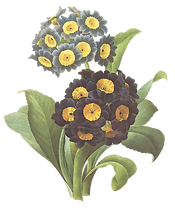COLOMBIAN DANCES
- Maria Elena Rincon
- 6 feb 2016
- 3 Min. de lectura
Some dances are happy, some quiet, others show their African and Indian influence. Multiculturalism is found throughout Colombia, it is reflected in their different rhythms and dances. There are many traditional dances found in our country. I am going to talk about the five regions that divide our country. The dances vary in region and climate for each region. Colombia dances arise primarily from Indigenous. Colombia has every year a lot of foreign visitors who come to our country to enjoy the different cultural events and participate in our carnivals.
Andean Region: It is comprised by the departments of Antioquia, Boyacá, Caldas, Cundinamarca, Huila, Norte de Santander, Quindío, Risaralda, Santander and Tolima. The typical dances of the Interior of Colombia are Bambuco, Corridor, Sanjuanero, Cane, Sanjuanito, the Sotareño, Torbellino, Guavina, Pasillo and Bunde but the most representative is the Bambuco. It is a dance in pairs with serene movements and suggestive gestures. The theme of bambuco is based on love, it is the process of peasant romance expressed through movement. The most characteristic figures are: the invitation; representing the ceremonial part, flirtation; representing the dialog
Amazonian Region: It is comprised by the departments of Amazonas, Caquetá, Guainía, Guaviare, Putumayo and Vaupés. It is located Southeast of the country it is known as the lungs of the world as the largest source of oxygen in the planet. The Zayuco is the most representative dance of this region.
Zayuco is a dance of offering used by indigenous. In this dance there are songs that are for men and others for women. All those songs that are sung while dancing, belong to the time when the cultural hero Buinaima instructed the people in the acquisition and used: fire, ax, coca, honey, snuff, fruits, that is to say the basic elements of their culture. It is a dance in pairs in which the dancers never turn their backs. Other dances of this region are Betsknate, Bambuko, Danza de los Novios.
Orinoquia Region: It is comprised by the departments of Meta and territories of Arauca, Casanare and Vichada. The Joropo is the most important dance of the Orinoquia. The joropo has Spanish ancestry, in their music and costumes.
Dancing Joropo it is characterized by stomps between couples where the man holds the woman by both hands. In this dance the men pose the dominance over women and nature in general, it is he who takes the initiative, who determines the figures to be made. Whereas the woman is passive, follows the beat and rhythm of music. Other dances are Galeron, Pasaje and Contrapunteo, El Seis Corrido, El Zumba que Zumba, El Carnaval, El Pajarillo.
The Caribbean Region: It is comprised by departments of Atlántico, Bolivar, Cesar, Cordoba, Guajira, Magdalena and Sucre. This region has also had an important influence of African culture. The gaita, maracas, tambora, and other percussion instruments, they represent rhythms of the Pacific Colombian. The Cumbia is the most representative dance of this region it is a dance of courtship, couples dance loose with free movement. This traditional dance is considered one of the most representative of Colombian folklore. Apparently, cumbia emerged during the colony in Cartagena during the festival of La Candelaria. La Pulla, el Bullerengue and Mapale are other representative dances of this region.
The Pacific Region is comprised by the departments of Cauca, Choco, Nariño and Valle del Cauca. The dances of the Pacific region are classified Sacras (Bundes and lullabies) that have religious connotations, and profane dances, some of European descent (Quadrille, Mazurka, Dance, Jack, Polka) and others with a strong African influence (abozao, Mona, Currulao.) The Currulao is one of the most popular rhythms of this region. It is a dance with spontaneous movements of the hips, shoulders, knees and quick turns around. Pacific rhythms have an instrument in common that makes them harmonious and joyful: the marimba along with the sound of cymbals and other percussion instruments.
Colombia is a country with great influence of the black race, giving rise to a variety of dances and music. However, native, mestizo and white influences have been greater wealth for our different dances. Our country has the most beautiful and colorful dances in the world. With this work I have known diverse ethnic, folk dances of my country. The Colombian rhythms are varied and lively. In this work I conclude that the dance is used as a social construct that reflects Lifestyles and individual social languages, and contribute to shaping our identity as individuals and community.





Комментарии